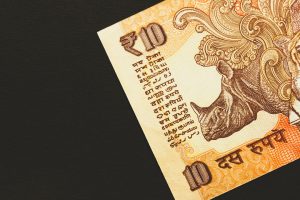The foreign exchange market, also known as the forex market, is the largest and most liquid financial market in the world. It is where currencies are traded 24 hours a day, five days a week, allowing traders to buy and sell currencies with the aim of making a profit. One of the ways forex can generate income is through interest. In this article, we will explain how forex collects interest.
Interest rates are a key driver of forex movements. Interest rates are the cost of borrowing money and the reward for lending money. Central banks are responsible for setting interest rates, and they use it as a tool to manage the economy. When interest rates rise, it becomes more expensive to borrow money, which in turn reduces spending and slows down the economy. Conversely, when interest rates fall, it becomes cheaper to borrow money, and this stimulates spending and boosts the economy.
Forex traders can earn interest by taking advantage of the interest rate differentials between currencies. When a trader buys a currency with a higher interest rate and sells a currency with a lower interest rate, they earn the difference in interest rates. This is known as the carry trade.
For example, let’s say a trader borrows 100,000 Japanese yen at an interest rate of 0.1% and converts it into US dollars, which has an interest rate of 2%. The trader will earn 2% interest on the US dollars and pay 0.1% interest on the yen, resulting in a net interest of 1.9%. If the trader holds the position for a year, they will earn $1,900 in interest.
However, the carry trade is not risk-free. Exchange rates can fluctuate, and if the exchange rate between the two currencies moves against the trader, they could incur losses. For example, if the yen appreciates against the US dollar, the value of the trade will decrease, and the interest earned may not be enough to cover the losses.
Another way forex traders can earn interest is through rollover rates. Rollover rates are the interest rates that are charged or paid on a position that is held overnight. When a trader opens a position, they are effectively borrowing one currency to buy another. If the position is held overnight, the trader will need to pay or receive interest on the borrowed currency, depending on the interest rate differential.
Rollover rates are calculated based on the interest rate differential between the two currencies, and they can be either positive or negative. If the interest rate on the currency being bought is higher than the interest rate on the currency being sold, the trader will earn a positive rollover rate. If the interest rate on the currency being bought is lower than the interest rate on the currency being sold, the trader will pay a negative rollover rate.
The amount of interest earned or paid on a position depends on the size of the position and the interest rate differential. Traders can view the rollover rates for their positions in their trading platform.
In conclusion, forex traders can earn interest through the carry trade and rollover rates. Interest rates are a key driver of forex movements, and traders need to be aware of the interest rate differentials between currencies to take advantage of these opportunities. However, traders need to be aware of the risks involved, as exchange rates can fluctuate, and losses can occur if the trade goes against them.





